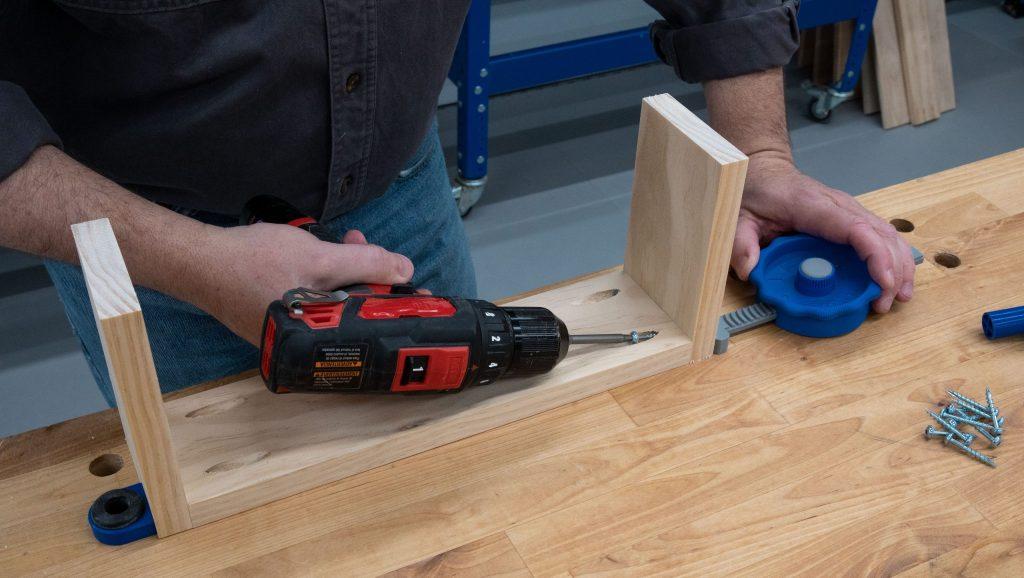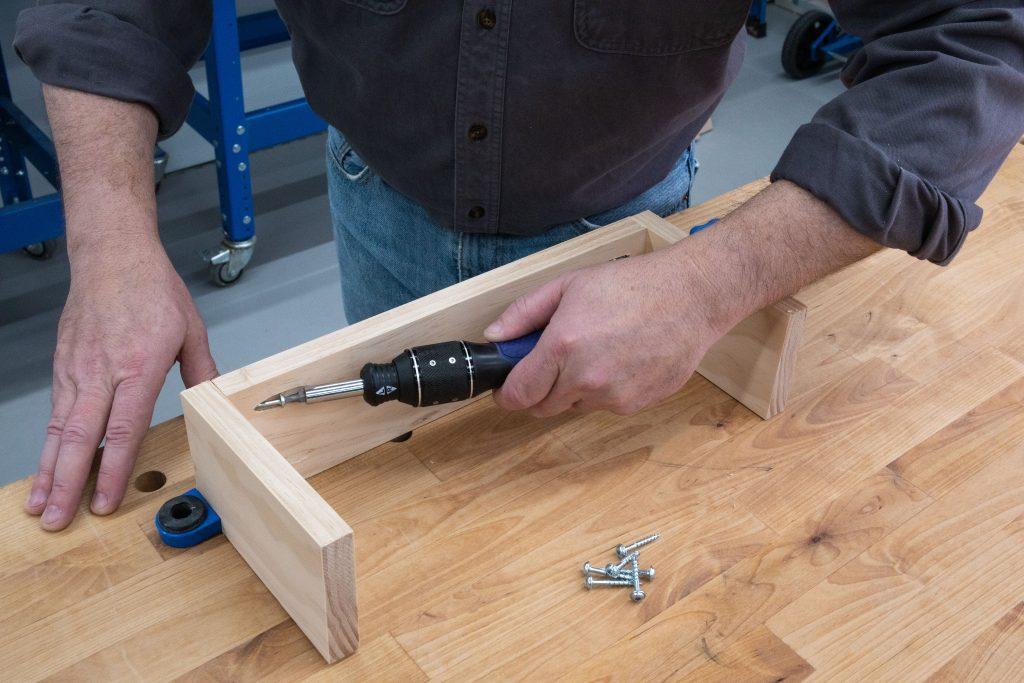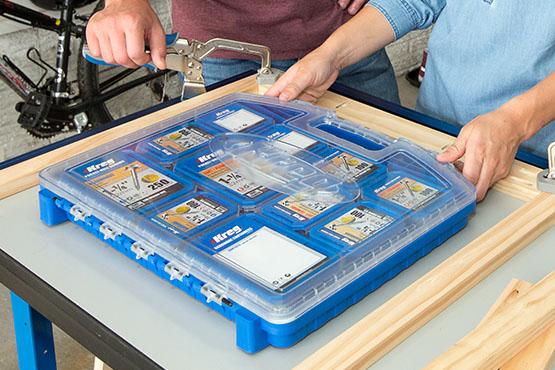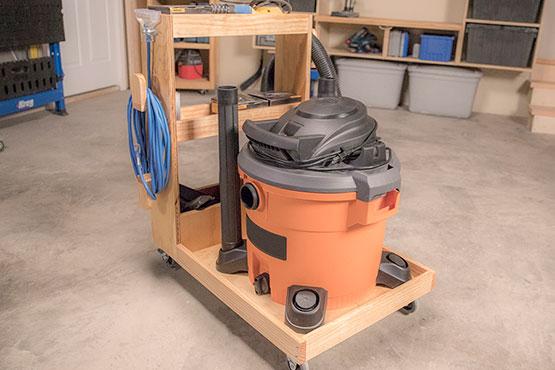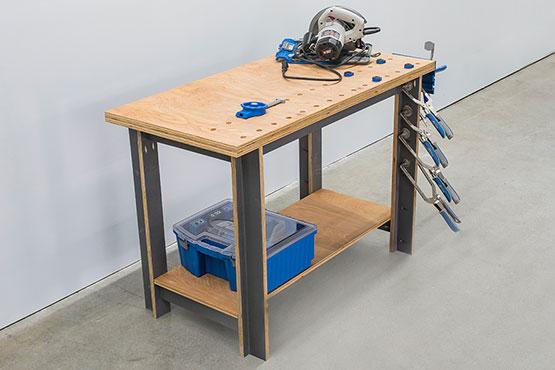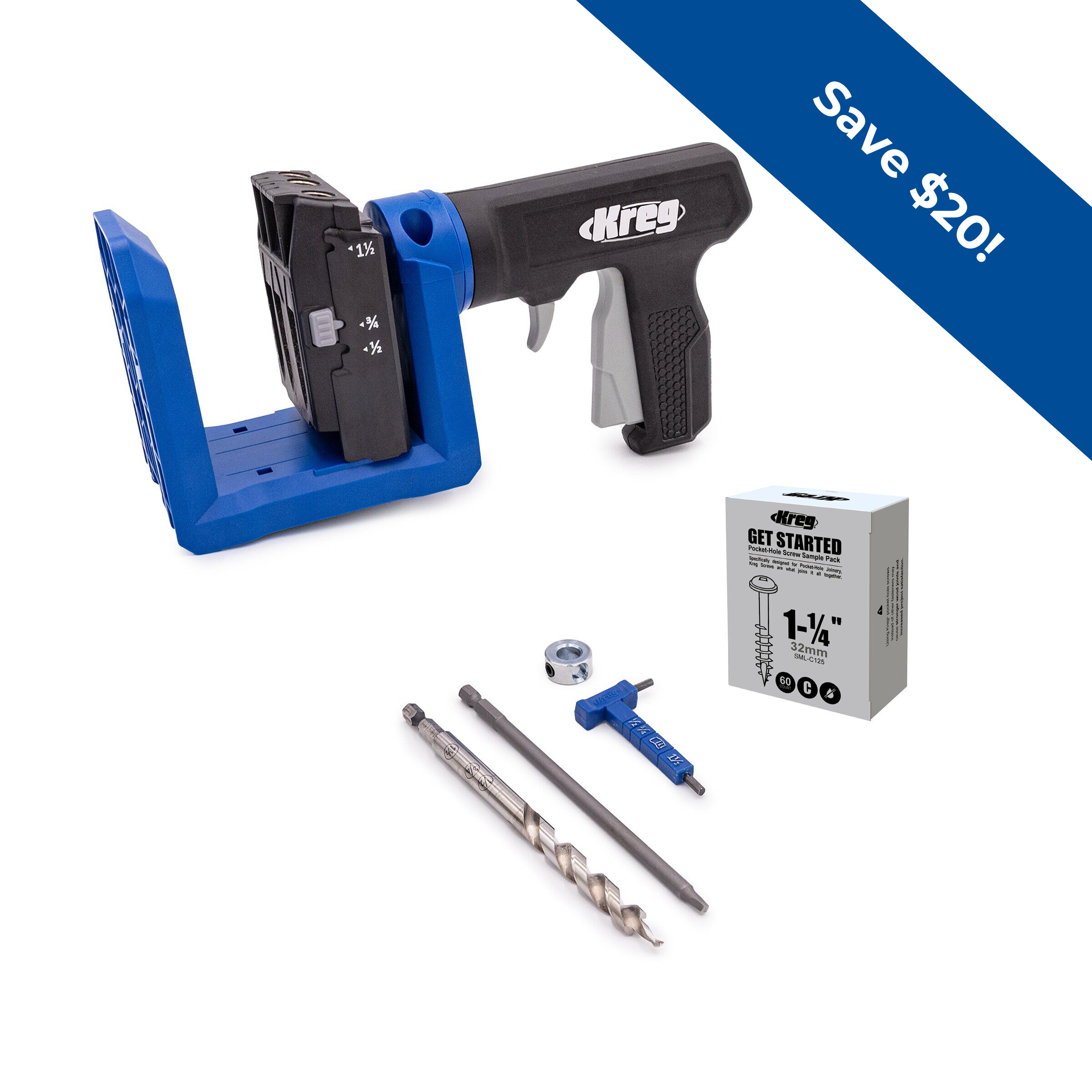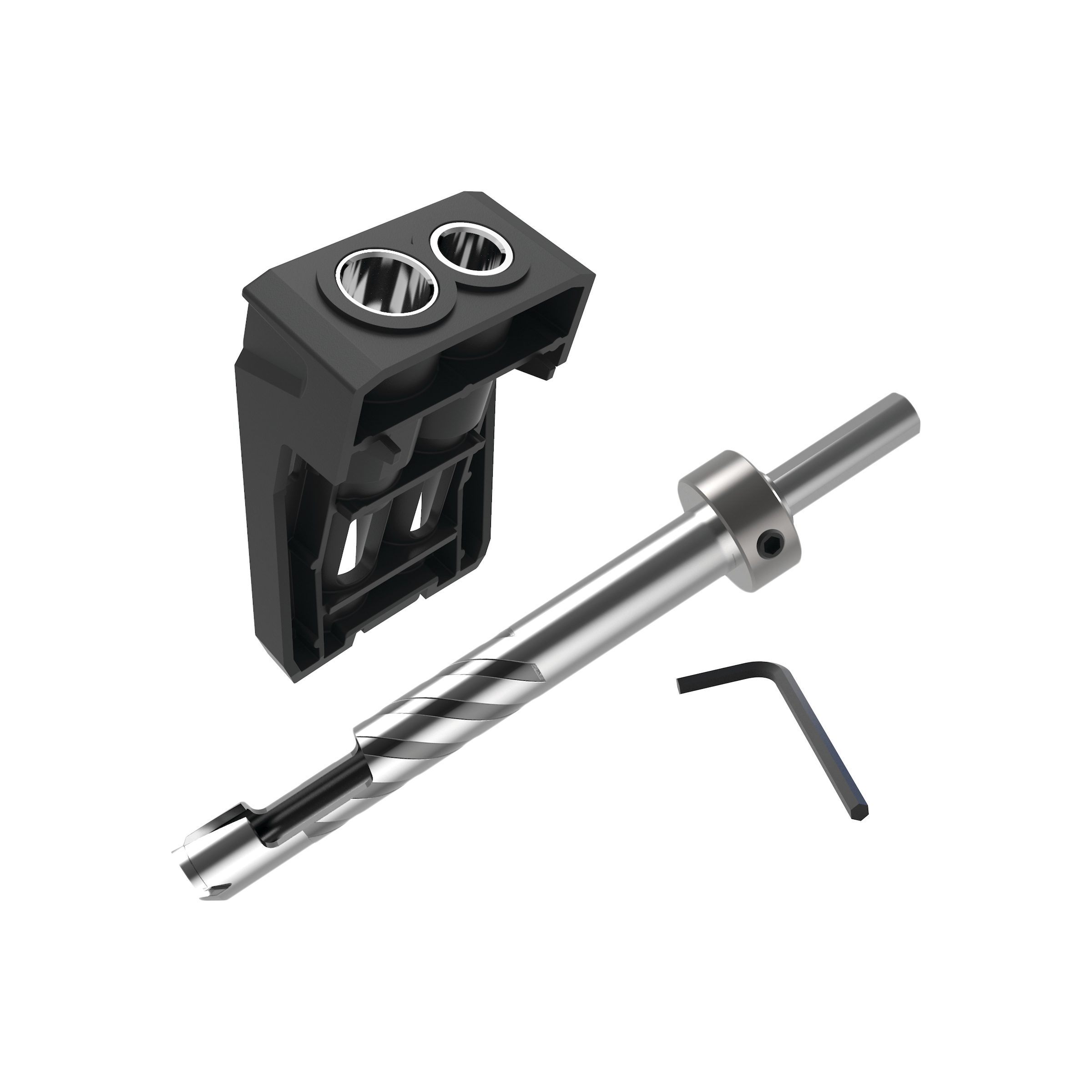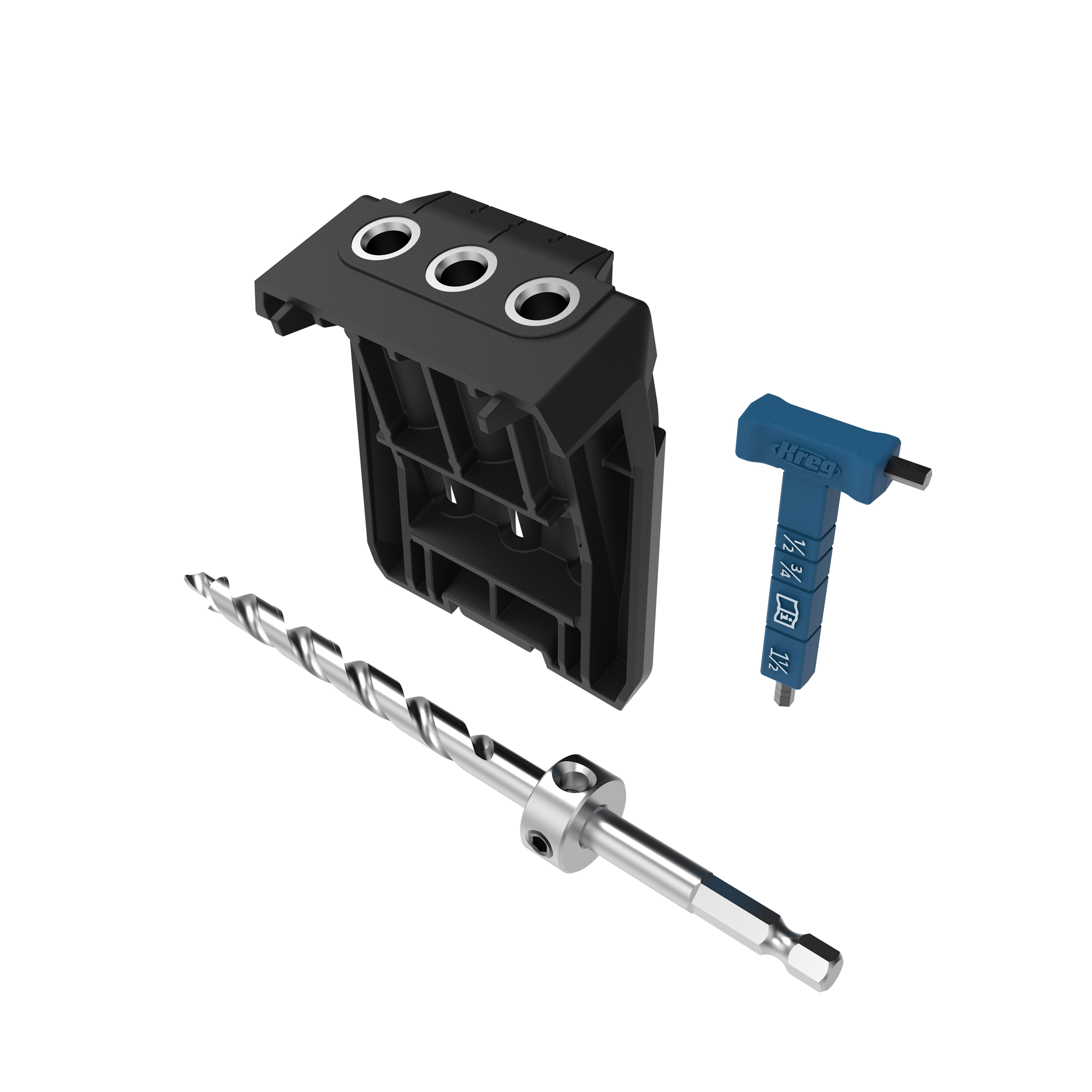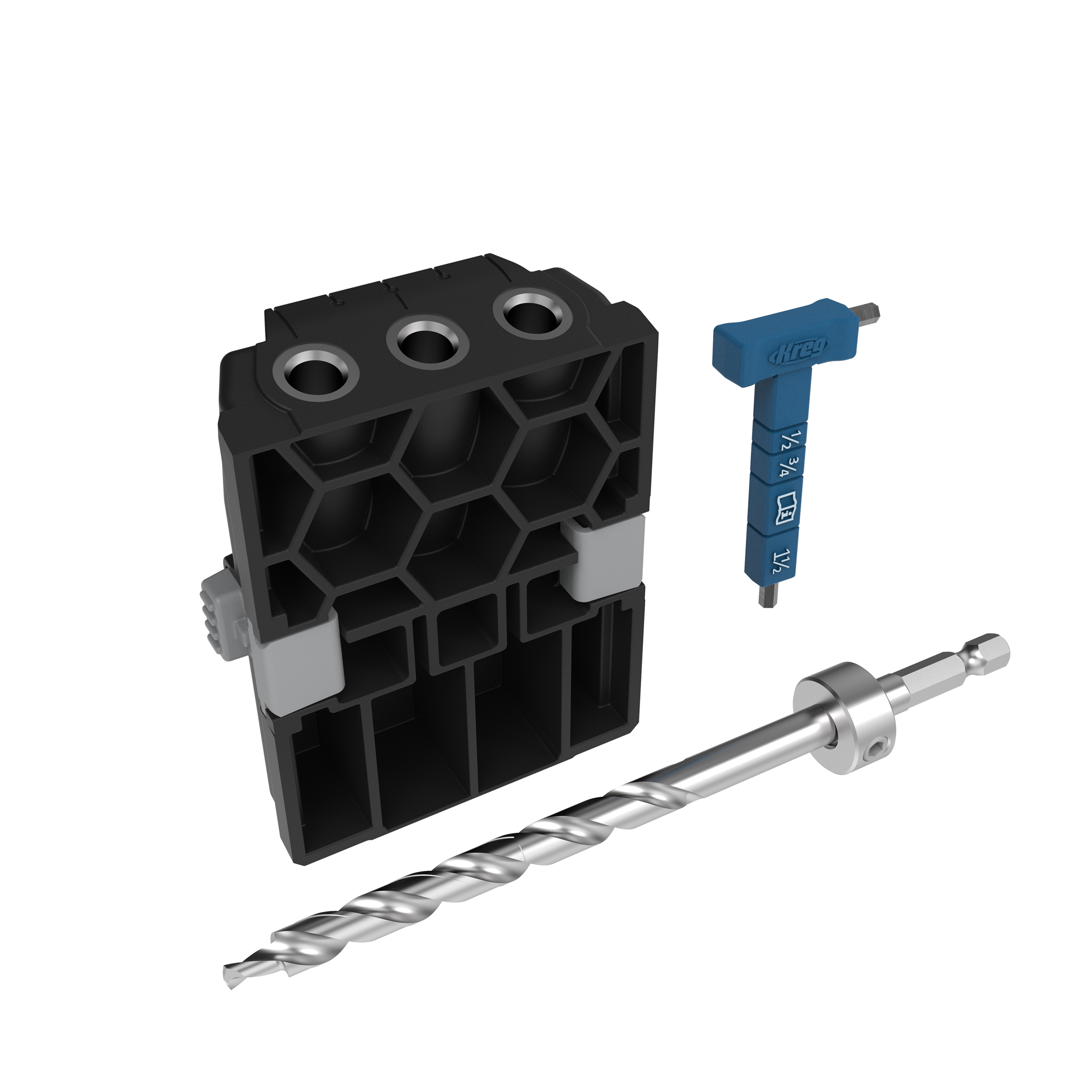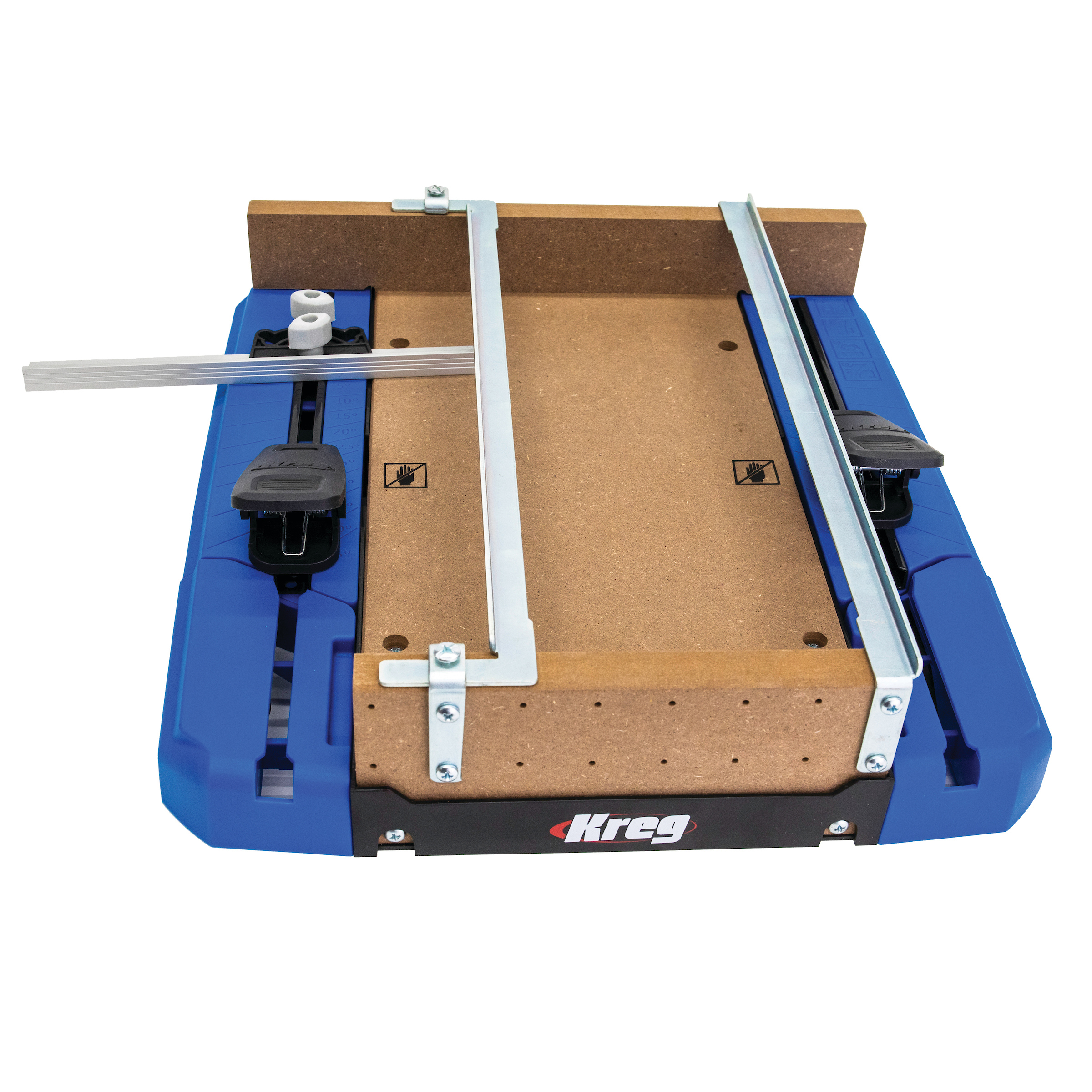Small projects are no problem with pocket-hole joinery
When you’re building with pocket-hole joints, you can usually place pocket holes where you’ll have easy access to drive in the screws. But sometimes you’ll run into a situation where it’s tough to get your drill and driver bit into position — like assembling a small project with tight spaces or making repairs. You may also have times when you think you’ll have no choice but to leave pocket holes exposed because of the tight fit.There are a few handy devices you can use to drive pocket-hole screws (and even drill pocket holes!) in tight places. Here are our favorites.
1. Select a shorter driver bit
Kreg Pocket-Hole Jigs come with a square-drive bit that’s 6″ long. You can also get one that’s just 3″ long to fit into tighter spaces. Or you can pick up a short driver bit at any hardware store or home center. Just be sure it has a #2 tip size so that it works with our square-drive screws.

2. Use a right-angle attachment
What can you do if the combined length of your drill and driver bit is too long to reach into the space where you’re working — even with a 3″-long bit? Reach for a right-angle attachment for your drill. You can pick up the Kreg 90° Pocket-Hole Driver for about $25 and it can be used with any drill.
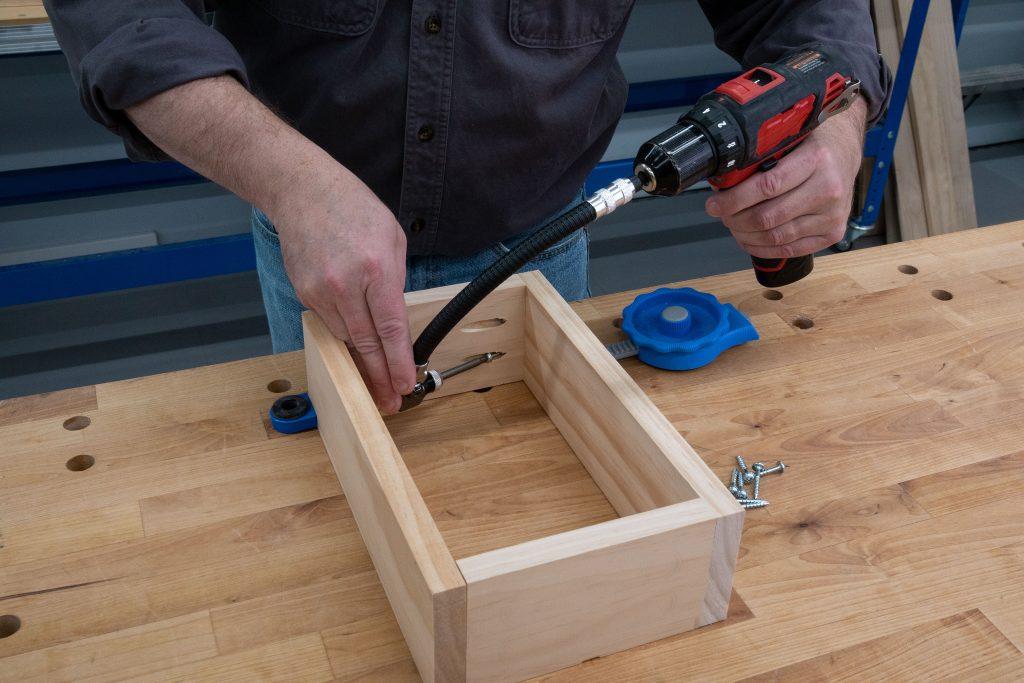
3. Get to tight spaces with a flexible attachment
If you need more reach than you can get with a right-angle driver, or if getting the driver and drill into a space is a challenge, check out a right-angle adapter that’s mounted to a flexible shaft. It will reach into some really hard-to-access places, especially when paired with a 3″ driver bit.
4. Choose a compact drill/driver
If you haven’t checked out today’s compact drills, you’re in for a great surprise. They offer impressive power, torque, and runtime in a small package that will fit into a smaller space.
These smaller drills are also lighter and usually better balanced than their bigger counterparts, which definitely cuts down on hand fatigue when you’re drilling lots of pocket holes or driving in lots of pocket-hole screws.
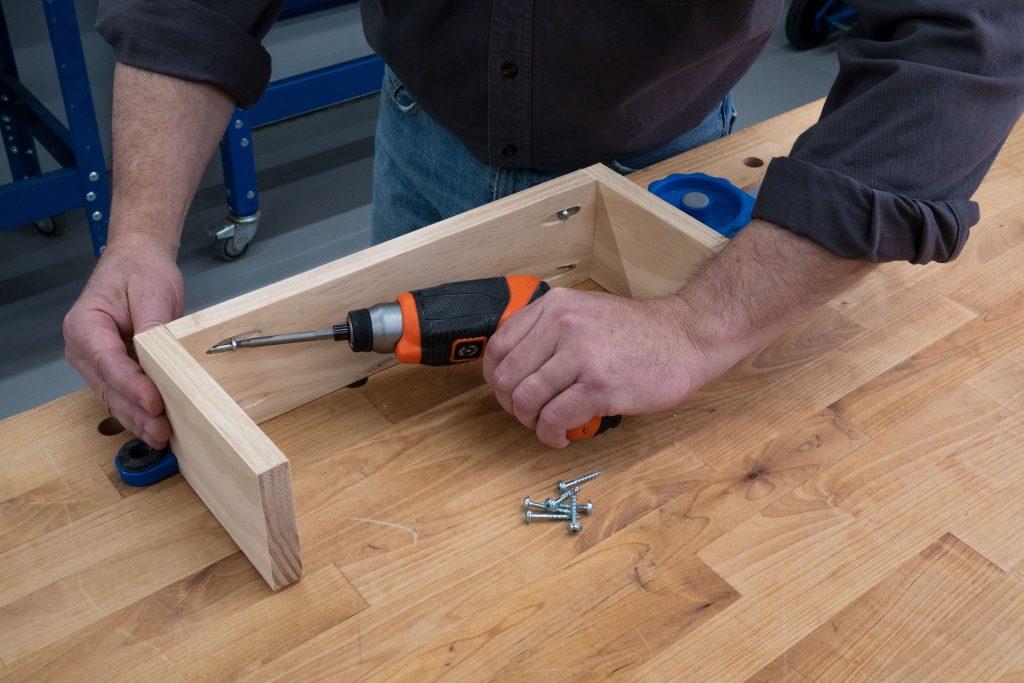
5. Grab a cordless screwdriver
If you’re not ready to invest in a new drill, but you’d like a smaller option for driving screws, a cordless screwdriver might be the trick. Available in home centers and hardware stores, these small drivers aren’t known for being super powerful, but they’re definitely small. Plus they’re nice to have on hand for small jobs around the house.
6. Drive screws by hand
Once upon a time, all screwdrivers were cordless. They were just powered by rotating your hand instead of by a battery. A hand screwdriver with interchangeable bits is still a great option. As long as it will accept a #2 square-drive bit, you can use it to drive pocket-hole screws. A screwdriver isn’t the fastest solution, but it can be just the ticket for driving a few screws in tight spaces.
There are even some high-tech options in hand screwdrivers. Ratcheting models allow you to drive screws by just turning your hand, and then turning the handle back to start driving again. Some ratcheting screwdrivers even have gears that speed up driving screws by rotating the bit more than the amount you rotate the handle.
7. Bring it all together for pocket-hole repairs
Kreg Pocket-Hole Joints are great for making repairs to wood items around your home. But drilling the pocket hole to make a repair can be challenging in hard-to-access spaces. If you combine a Kreg Pocket-Hole Jig, such as the 300-Series, with a right-angle attachment for your drill, you can make repairs in tight spaces.
With the 300-Series Jigs, you can remove the material thickness stop, and then position the drill guide where you need to place your pocket hole. You can hold the drill guide in with a clamp, or with a Kreg Pocket-Hole Screw. Then, chuck the stepped drill bit into your drill attachment and create your pocket hole. After that, use the driver bit in your attachment to place the screw.


